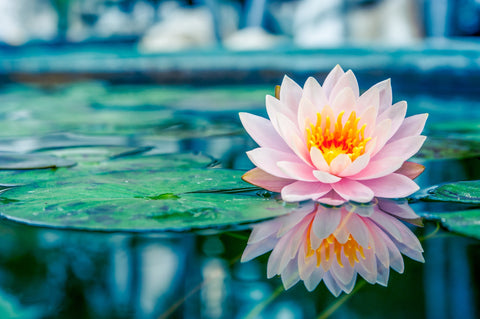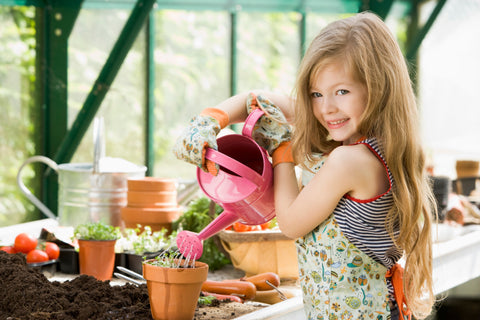The lotus (Nelumbo nucifera), also known as the sacred water plant, is a symbol of purity, harmony and rebirth in many cultures. Although we often associate it with exotic ponds and temples, the lotus can also be successfully grown at home – in larger containers, aquariums or gardens. Growing it from seed is an opportunity for many to connect with nature, follow the slow growth of the plant and enjoy its beautiful flowers. However, growing a lotus requires patience, precision and a proper understanding of its needs.
Below is a detailed guide on how to grow a lotus at home from seed, what we need to look out for, what kind of environment suits it best, how and when to change the water, and what are the specifics of its growth.
You can find lotus seeds here.
🌿 Preparing lotus seeds
Lotus seeds are among the most durable in the world – in archaeological excavations in China, seeds over a thousand years old were found that were still germinating. The key to successful cultivation is proper seed preparation.
-Hard shell: Lotus seeds have a very thick and hard shell that protects them from environmental influences. In order to germinate, they need to be mechanically processed.
-Scarification process: The most common method is to carefully sand or score the hard shell at one end of the seed (not the one where the embryo is!) with a file, sandpaper, or knife. It is sanded until the lighter interior is reached, but without damaging the kernel.
-Soaking: After that, the seeds are placed in a jar or container with warm water (about 25–30 °C). The water must be clean, preferably filtered or boiled and cooled.
The first changes appear within a few days – the seed begins to swell, the shell cracks and a sprout emerges from it.

🌿 When does the lotus germinate?
If the seeds are properly prepared, the lotus can germinate in 3–7 days . A small white shoot appears first, which then elongates and forms the first leaf. Within a few weeks, long, narrow leaves grow that float on the water. As the plant progresses, it begins to produce upright leaves that rise above the water surface – this is a sign that the lotus has taken root well and is ready for further growth.
It is important to know that the lotus blooms only after several months (usually after 6–9 months), and sometimes only the following year, if conditions are poorer.
🌿 Space and conditions for growing
Lotus is a heat-loving plant that thrives best in warm, sunny environments. When growing it at home, you should pay attention to the following:
-Temperature: Lotus needs warmth. The ideal temperature for germination and growth is between 24 and 30 °C. In colder conditions, the plant stagnates or dies.
-Light: Lotus loves the sun. The container with the germinating seeds should be placed on a sunny window, balcony or garden, where it gets at least 6 hours of direct sun per day.
-Container: A glass jar is sufficient for germination, but a larger container (at least 20–30 liters) is needed for further growth. The container should be wide and shallow because the lotus develops long underground rhizomes that spread horizontally. The depth of the water should initially be 5–10 cm, and can later be increased to 15–25 cm.
If you grow a lotus outdoors, you can keep it on a balcony or terrace during the summer. In winter, the plant should be protected from the cold – by moving it indoors or into a smaller container.
🌿 Soil and transplanting
When the seeds germinate and the first leaf emerges, the plant should be transplanted into the ground to develop strong roots.
-Soil type: Lotus grows best in heavy clay soil without the addition of artificial fertilizers. Light garden soil or potting soil is not suitable because it quickly rises to the surface and turbidizes the water.
-Planting: Place 5–10 cm of clay soil at the bottom of the container, and carefully place the sprout in it. The seed is not planted too deep – just enough for the root to be in the soil, while the shoot remains above it. Then, fill the container with water to cover the soil.
-Covering: A layer of sand or small stones can be added to the surface of the soil to prevent soil heaving.
🌿 Water change
When growing lotuses from seed, water is key.
-During the germination phase: The water should be changed every day or at least every two days to prevent the growth of bacteria and mold. The water must always be warm and clean.
-After transplanting: Once the plant is transplanted into the ground, changing the water is no longer necessary. The lotus naturally filters the water and creates a stable little ecosystem. The water only needs to be topped up when it evaporates, as the lotus likes still water.
If you grow lotus in an aquarium or decorative container, make sure that the water is not too chlorinated - use boiled or filtered water if necessary.
🌿 Lotus growth characteristics
Lotus is a beautiful but somewhat demanding plant that rewards patient growers.
-Leaves: Young leaves float on the surface, while mature plants develop large leaves that rise above the water. The leaves are water-repellent and coated with wax.
-Rhizomes: Lotus grows through underground rhizomes, which spread horizontally. That's why he needs a wide container.
-Flowering: Lotus flowers are large, fragrant, and last for several days. They are usually white or pink in color. After flowering, a seed head develops, resembling a water spray.
-Dormand: In winter, the lotus enters a dormant phase. The leaves die off, and the rhizome survives in the ground under water. It sprouts again in the spring.
🌿 Common mistakes in growing lotuses
To successfully grow lotus, we need to avoid the most common mistakes:
- Too little light: Without enough sun, a lotus does not bloom and barely grows.
- Wrong soil: Light soil rises to the surface and harms the plant.
- Too little space: Lotus needs width for rhizome development.
- Water that is too cold: Below 20 °C, the plant stagnates, and in prolonged cold weather it dies.
- Changing the water too often after transplanting: Once the lotus is planted in the ground, we no longer change the water – we just top it up.
🌿 Conclusion
Growing lotuses at home from seed is a special process that requires patience and precision, but the reward is worth the effort. Watching a small seed, resistant for thousands of years, grow into a powerful plant with a captivating flower is a true magic of nature.
Although we consider the lotus an exotic plant, with a little knowledge it can be successfully grown in a home environment – in a pot on a balcony, in a decorative pond or even indoors, with enough light. The most important thing is to provide it with warmth, sun, calm water and enough space to develop.
When the lotus first blooms, it brings not only aesthetic beauty, but also a sense of inner peace and contentment. Therefore, growing lotuses is not only considered a gardening activity, but also a symbolic path of patience, harmony, and connection with nature.



